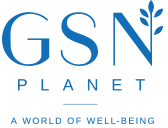Water is a renewable but very limited source. Less than 3% of the world’s water is freshwater. Of the 3% over 2.5% is frozen, locked up in the Arctic, the Antarctica, and in glaciers, and not available to people. That means that we rely on a remaining 0.5% to fulfill all individual, business, and nature’s freshwater needs. Caused by changes in our lifestyles and a continuing increase in population, water usage has been on a constant rise in the last decade. Increased and inefficient use of water has limited the availability of water and, together with water pollution, put enormous pressure on freshwater ecosystems.
For spas water is one of the most essential elements. The term Spa is intricately connected to water and related features and treatments. Water is used for spa treatments, tubs, pools, and showers as well as for spa operations such as laundry, cleaning, and landscaping. Even if most American spas generate the majority of their revenue through massage treatments, which are less water intensive than body treatments, guests will always associate spas with the healing aspects of water and expect a variety of water related features for a “true” spa experience.
Sustainable water management includes efficient water use as well as wastewater considerations. As such it is an issue for spas in all part of the world, no matter if they are located in arid areas with limited water supply or in areas with access to seawater or plenty of rainfall. The main challenge for successful water management will be to find the right balance between sustainable water use and wastewater management, guest expectation and spa experience.


